 March’s full moon reaches peak illumination at 3:20 A.M. EDT on Friday, March 18th. Known as the Worm Moon, is the last full moon before the spring equinox. In Christianity, this means that the Worm Moon is known as the Lenten Moon as it is the last full moon of winter. There are a number of possible reasons for the moniker ‘Worm Moon.’ One possible explanation is that the moon is named after the appearance of earthworms as the soil warms in the spring. Alternatively, 18th-century explorer Captain Jonathan Carver wrote that the moon name refers to beetle larvae that emerge from thawing tree bark.
March’s full moon reaches peak illumination at 3:20 A.M. EDT on Friday, March 18th. Known as the Worm Moon, is the last full moon before the spring equinox. In Christianity, this means that the Worm Moon is known as the Lenten Moon as it is the last full moon of winter. There are a number of possible reasons for the moniker ‘Worm Moon.’ One possible explanation is that the moon is named after the appearance of earthworms as the soil warms in the spring. Alternatively, 18th-century explorer Captain Jonathan Carver wrote that the moon name refers to beetle larvae that emerge from thawing tree bark.
Category: Education
Panama City Beach Scottish Festival
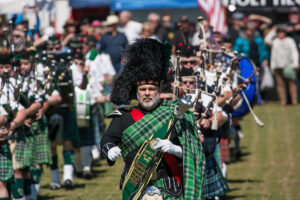
Tomorrow is the Panama City Beach Scottish Festival. This one-day event is hosted by the Celtic Cultural Alliance and held at Frank Brown Park. The event includes Highland Games, premium scotch whisky tasting, Irish Step dancing performances, a British car show, Scottish Bagpipe bands, kids play area, and vendors selling Celtic-inspired goods. The Highland Games include a Stone Throw, Scottish Heavy Hammer Throw, and the Sheaf Toss. Tickets are $25 for adults, $10 for kids aged 6-14, and free for children 5 and younger. Please note that the premium scotch whisky tasting requires a special ticket costing $35. Learn more about the Scottish Festival and the Celtic Cultural Alliance by visiting their website here.
Palindrome Week
A palindrome is a word, number, phrase, or other sequence of characters which reads the same backward as forward. The first palindrome was written in Latin and traced back to ancient Rome; they have also been found in ancient Sanskrit and Greek. Additionally, palindromes have been found as graffiti in the remains of the city of Herculaneum. Herculaneum was buried in volcanic ash circa AD 79 by Mount Vesuvius, Italy. The last week of February is a week of palindromes: 
Leave the Leaves to the Bees!
Did you know that Florida is home to more than 300 species of bees?! In Florida, bees are active most of the year and rely on a variety of nesting materials to stay alive and reproduce. They may nest in well-drained soil that is sparsely vegetated, in trees or other wood, plants with hollow stems, or under fallen leaves. It is important to leave fallen leaves where they land in order to protect bee habitats, as well as help renourish the soil with nutrients from the decaying leaves.
It is incredibly important to help bees – and other insects – because they pollinate over 80% of flowering plants and food crops. The impact of bees’ hard work is seen very clearly here in the Panhandle, a notoriously agriculture-heavy area. If you would like to further assist the hard-working pollinators in your area, consider planting native wildflowers to help feed them and shelter them. Not only will you be helping the natural world but you will also get some beautiful flowers to enjoy! Click on the image below to view a list of wildflowers. 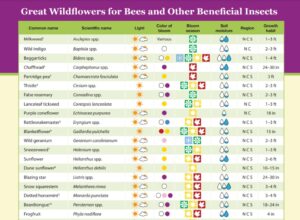
Amelia Island Book Festival
The Amelia Island Book Festival is celebrating its 20th anniversary this year. This annual festival is designed to engage adults and young people in the joy of reading and writing through a series of public events; the events typically feature New York Times best-selling authors, independent publishers, independent authors, awards programs, and workshops. The Annual Author Expo is occurring February 18-19. The event offers the opportunity to engage with more than 100 authors, listen to panel discussions, and get books signed; admission is free to this event.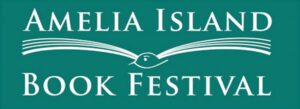
Additionally, there will be a 20th Anniversary Gala hosted at the Ritz-Carlton. The featured authors at this evening event will be David Baldacci, Mary Alice Monroe, Jennifer Niven, and Jeannette Walls; there will also be a cocktail reception, an author panel discussion, and a book signing. Learn more about the Amelia Island Book Festival and the organization it benefits here.
PCB Conservation Park Birding
 Interested in birding, photography, or learning about the natural world? Consider taking part in one of the upcoming Birding Walks at the Panama City Beach Conservation Park. The walk will be held twice this month on February 12th and again on February 19th from 7:30-9:30 am. The early morning walk will be led by a member of Bay County’s Audubon Society. Participants are not required to have their own binoculars but are encouraged to bring water. For more information, please contact the PCB Parks Department at (850)233-5045.
Interested in birding, photography, or learning about the natural world? Consider taking part in one of the upcoming Birding Walks at the Panama City Beach Conservation Park. The walk will be held twice this month on February 12th and again on February 19th from 7:30-9:30 am. The early morning walk will be led by a member of Bay County’s Audubon Society. Participants are not required to have their own binoculars but are encouraged to bring water. For more information, please contact the PCB Parks Department at (850)233-5045.
Hickory Gall and Anthracnose: Tree Health

Homeowners in Florida know the value of shade trees; hickory trees offer great shade but have increasingly been afflicted by hickory anthrocnose. Hickory anthrocnose, otherwise known as leaf spot, is caused by a fungal infection during the upcoming wet summer months in Florida. The disease is often accompanied by large reddish brown spots on upper leaf surfaces and brownish spots on the bottom of the leaves. To help prevent leaf spot, be sure to rake and remove leaves close to the trunk of the tree.
If the infection persists, remember to Google your local UF:IFAS Extension agent to set up a site visit; they firmly believe that saving a tree is time well spent. Additionally, they would like to state that “When in doubt give our trees the benefit and keep them in place.”1
Take Your Child to the Library
 Tomorrow is Take Your Child to the Library Day! The initiative was started by Nadine Lipman in 2011 as a way to bring community awareness to the wonderful resource local libaries represent; it is also designed to help promote childhood literacy and library events. The event started with one single library and has since grown to include libraries all over the country! Additionally, Lipman was joined by co-chairperson Caitlin Augusta. The original website created by Lipman can be found here. Encouraging your kids to read helps boost language skills, critical thinking, reading comprehension, emotional intelligence, encourages creative thinking, and enhances concentration.
Tomorrow is Take Your Child to the Library Day! The initiative was started by Nadine Lipman in 2011 as a way to bring community awareness to the wonderful resource local libaries represent; it is also designed to help promote childhood literacy and library events. The event started with one single library and has since grown to include libraries all over the country! Additionally, Lipman was joined by co-chairperson Caitlin Augusta. The original website created by Lipman can be found here. Encouraging your kids to read helps boost language skills, critical thinking, reading comprehension, emotional intelligence, encourages creative thinking, and enhances concentration.
Panhandle Flower Spotlight
American beautyberry is a lovely plant that offers two wonderful display times each year. It is also known as French mulberry, sourbush, bunchberry, or purple beauty-berry. In the late spring and early summer, there are light colored lavendar flowers in small clusters along the upright stems of the plant. In fall, there is a big showing of color in the form of shiny purple fruit clusters called drupes.
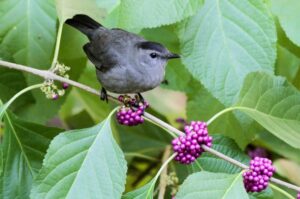
American beautyberry is very important for the local wildlife; cattle enjoy the twigs and leaves in the winter and twigs in the winter. Additionally, the fruit is important for over forty types of songbirds including the American Robin, Brown Thrasher, Purple Finch, and Eastern Towhee. The drupes/clusters are eaten by armadillo, foxes, opossum, raccoon, and squirrels. Additionally, white tailed deer consume the fruit in the fall after leaves drop. They also browse the leaves in summer when highly preferred foods are not available.
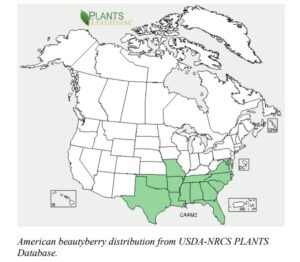 Bunchberry is also used for botanical home remedies. For instance, the roots, leaves, and branches were used by various Native American tribes for medicinal purposes to treat malarial fevers and rheumatism. The roots were used to treat dizziness, stomachaches and dysentery. Roots and berries were boiled and drunk to treat colic. The leaves can be crushed and stuffed in pockets or under hats to repel mosquitoes. Studies conducted by the Agricultural Research Service has shown two compounds – callicarpenal and intermedeol – are responsible for the repellant effect.
Bunchberry is also used for botanical home remedies. For instance, the roots, leaves, and branches were used by various Native American tribes for medicinal purposes to treat malarial fevers and rheumatism. The roots were used to treat dizziness, stomachaches and dysentery. Roots and berries were boiled and drunk to treat colic. The leaves can be crushed and stuffed in pockets or under hats to repel mosquitoes. Studies conducted by the Agricultural Research Service has shown two compounds – callicarpenal and intermedeol – are responsible for the repellant effect.
Panhandle Flower Spotlight
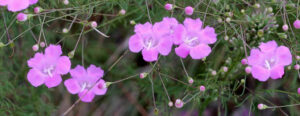 False Foxglove is named for the appearance of their brilliant pink flowers which bear a resemblance to the northern favorite Foxglove. False Foxglove actually covers a collection of closely related parasitic plants that are difficult to distinguish by all but the keenest of botanists. False Foxglove is an unusual and important Florida native plant that explodes into beautiful, vibrantly colored flowers of light purple to pink from September to December.
False Foxglove is named for the appearance of their brilliant pink flowers which bear a resemblance to the northern favorite Foxglove. False Foxglove actually covers a collection of closely related parasitic plants that are difficult to distinguish by all but the keenest of botanists. False Foxglove is an unusual and important Florida native plant that explodes into beautiful, vibrantly colored flowers of light purple to pink from September to December.
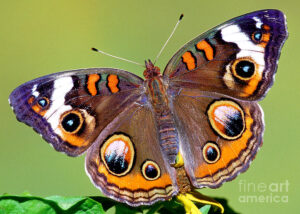
This species plays important ecological roles in Florida’s natural areas. The tubular flowers are the preferred nectar source for the larger-sized native solitary and bumble bees present in the Panhandle, although all manner of bees and butterflies will also visit. Additionally, False Foxglove is the primary host plant for the unique Common Buckeye butterfly. Common Buckeye larvae (caterpillars) feed on False Foxglove foliage during the summer before emerging as adults.
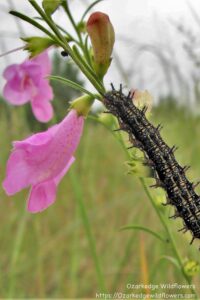 False Foxglove is an important indicator of a healthy native ecosystem. As a parasitic plant, False Foxglove obtains nutrients and energy by photosynthesis AND by using specialized roots to tap into the roots of nearby suitable hosts (native grasses and other plants). As both False Foxglove and its parasitic host plants prefer to grow in the sunny, fire-exposed pine flatwoods and sand ridges that characterized the natural pre-settlement Florida, an area with an abundance of False Foxglove in flower is likely in good ecological shape! A perfect example of this is Torreya State Park, an area that explodes in beautiful fall foliage around September.
False Foxglove is an important indicator of a healthy native ecosystem. As a parasitic plant, False Foxglove obtains nutrients and energy by photosynthesis AND by using specialized roots to tap into the roots of nearby suitable hosts (native grasses and other plants). As both False Foxglove and its parasitic host plants prefer to grow in the sunny, fire-exposed pine flatwoods and sand ridges that characterized the natural pre-settlement Florida, an area with an abundance of False Foxglove in flower is likely in good ecological shape! A perfect example of this is Torreya State Park, an area that explodes in beautiful fall foliage around September.